"Stardust"
 Much like the multitudes of tiny, barely perceptible, stars sprinkled throughout the skies, the seemingly random thoughts and philosophies that sparkle from time to time in my head need some place to call home in the cosmos.
Much like the multitudes of tiny, barely perceptible, stars sprinkled throughout the skies, the seemingly random thoughts and philosophies that sparkle from time to time in my head need some place to call home in the cosmos.Thus, "Stardust" allows me to share thoughts and ideas from all of the ranges of human thought: personal, natural, scientific and various excursions into otherwise random thoughts. Some may have no beginning, no end. But others I hope that you might benefit through knowing.
Essentially, "Stardust" is my personal forum to talk to YOU; hopefully you will be a dedicated listener. You may not agree with me all the time - perhaps some of you never - but it might be fun for you to judge for yourself just how misguided I am in my wanderings.
I have had a rich life: art, poetry, music, archeology, paleontology, geology, microbiology, astronomy, astrophysics, environment. But richest of all are the humans that I have come to know and those with whom I have shared my life.
Please indulge me while I share just a bit longer.....
.....welcome to "Stardust."
Dr. Clay
-----------------------
-----
Petit Jean Pine Cones: The Christmas Memory Tree
ByP. Clay Sherrod
The holidays are approaching and we all begin to feel the magical touch of the season, yet must admit that we start to fretting over what to give others.
Christmas presents – darn those pesky things that we worry and fuss over. “What do you want for Christmas?” you may ask others. “Oh…..nothing…”, they say with the final word fading downward in a death spiral. But really, we all want presents and want gifts; those are the tokens that demonstrate that others still remember, love and care for us.
Madison Avenue has diverted our ideas of “Christmas Presents” from really cool BB guns and record players for our children to high-ticket items such as Ford Mustangs and trips to Aruba. Is this really the spirit of Christmas?
For the Sherrods, we have a tree that goes up when the calendar is turned to November. Why so early? Because it is our Memory Tree. It has no shiny red and green balls, no tinsel, no flashy store-bought ornaments. I will admit that we went retro about a decade back and succumbed to stringing two strings of old multi-colored bulb lights from the 1950’s.
Our Christmas Tree is a tree of deep family memories – visual representations of every child and grandchild and every year of life that we have been together, combined with ornaments cherished from our ancestors more than a century gone. Memories of so many Christmases past, it serves as a reminder of people long gone, tiny children now grown, and the progress of ourselves in this long path of life.
Upon this mighty tree hang the works of many little or even aging hands, some nearly 150 years ago, as each and every family member created an ornament that was never thrown away. On this tree are memories of the lives of our great-grandparents, parents, children and their children. Many decorations are crude, some came from school, others surprises made in secret behind closed doors of their rooms. Singularly, they may not seem impressive to most who see them, but once all are on the tree, the magnificence of the Memory Tree shines. We are able to see, hear, smell and feel the moments years ago that created all that adorn Old Tannenbaum.
As each and every one is carefully taken out of its wrapping, the memory fills the room and we are reminded of that little child or that ancestor so many years ago.
It might be a pipe cleaner reindeer, or one cloned from a curvy peppermint stick with antlers now in disarray after 35 years. A handprint is unpacked, that of grandchild now nearly grown. Some are made of paper and glitter, others from creative combinations under the guidance of some teacher or leader who I wish that I could thank. A silk-covered ball hangs still embellished with the beads from nearly a hundred years ago.
None ever got pinned by a refrigerator magnet, they were not shoved in a drawer and later discarded. They always went on the tree. Gradually, the fancy store-bought ornaments disappeared, groups at a time, and were replaced by memories.
My cherished gift is three tiny and now-fragile pine cones from the forests of Petit Jean Mountain, each strung with a short length of red yarn to hang from the boughs of my tree. Each was made secretly by my children during a Christmas season when none of them were able to obtain a present for their Dad. My heart soars each time I hang those tiny gifts, made on a cold Christmas Eve in our cabin on Petit Jean 33 years ago; they could be made of gold and have no greater value.
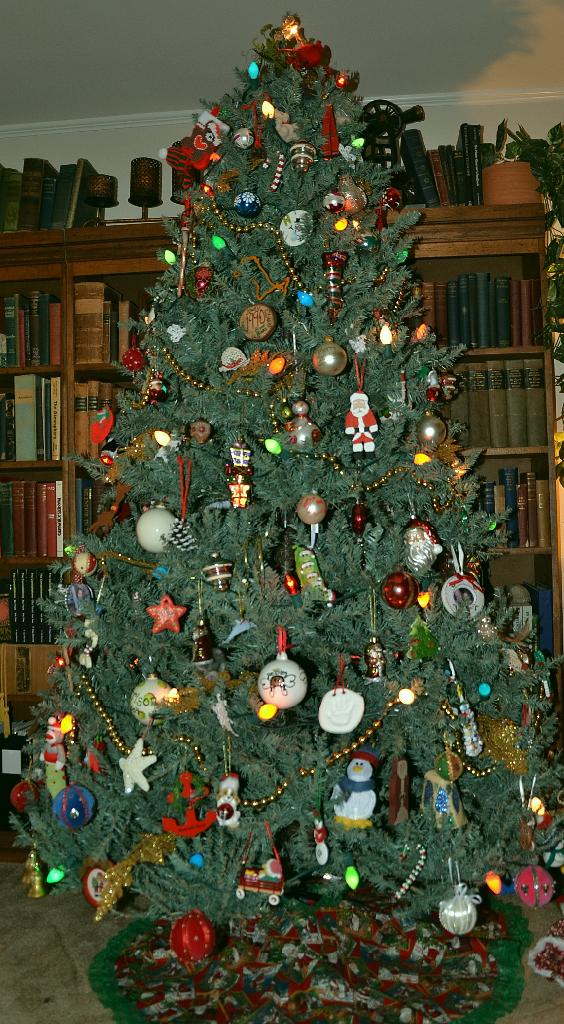

---------- The Sherrod "Memory Tree": 150 years of family memories to celebrate the gift of Christmas -----
Collectively, in my opinion, our tree is the most beautiful Christmas tree ever assembled. It takes days or a week to put up, because each and every decoration is held and studied to revive the memory and keep intact to preserve for the next year’s unveiling.
So all this brings up a solution for your shopping dilemma: do not tell all your friends, your family and loved ones that you want nothing – instead tell them that you want the most important gift that they can give:
Something of themselves, a piece of their soul and being. Tell them to make – create -something with their own minds and hands that will last you forever and create for you a memory of them. Every time you carefully unwrap their gift in Christmases future, you will stop and take a little time to remember them and how they influenced your life. That small ornament, made with hands we may no longer see, becomes the living essence of their impact to your life. They have left behind a tiny reminder of their existence.
After all, is that not the very essence of Christmas?
The one thing that God was able to give the people of Earth to hopefully bring peace to all of us was his own son. That was His gift from His hands, just as the gifts and tiny pine cones assembled with small hands can bring peace and joy to us all.
No matter how few ornaments you may have, start your Memory Tree next year…encourage your family and friends to contribute to it, and you do the same for them to create an annual excursion into times gone by.
Merry Christmas.
PCS December 2017
--------
Positive Community Response to Outdoor Lighting in Arkansas
I thought that I would share not only an interesting outcome to light pollution
problems, but a bit of insight as to how proper interaction makes all the difference
in the world in terms of approaching your community about light trespass; here in
Arkansas we have a shielded light law that requires all new construction and state
facilities to incorporate light shields which is a huge step in the right direction.
But what about huge industries that have been "grandfathered-in" with existing
lighting?
Such is the case in our local community with many large enterprises and industries
spilling light into the night sky.
When Arkansas Sky Observatories (ASO) relocated to their present locations on
Petit Jean Mountain, in Conway County, Arkansas (about 50 miles due west of populated
Little Rock and Conway), the light pollution was evident, but
Read more: A Positive Improvement in Outdoor Lighting for Arkansas
Arkansas Sky Observatories' 100,000 Milestone
by P. Clay Sherrod
Arkansas Sky Observatories will reach it's sixth decade of serving science
through research, publications and teaching in March, 2021,
becoming one of the world's oldest active and contributing observatories worldwide
that is completely privately funded for its research and activity.
During the morning of June 8, 2017, Arkansas Sky Observatories' Petit Jean Mountain South facility - H45 - reached a milestone. At 09:37 Universal Time, its precise measurement of the position and magnitude of the Near Earth Object asteroid 2017 HY50 resulted in the 100,000th astrometric measurement of comets and minor planets for the International Astronomical Union's Minor Planet Center.
----------
The Legacy of Arkansas Sky Observatories
Founded by P. Clay Sherrod in 1971, the first principal focus of Arkansas Sky Observatories (ASO) was the study of Mars during its very close opposition in that year of the planet Mars. The subtle surface and atmospheric changes noted throughout the close approach resulted in the desire to concentrate studies of celestial objects of change: the planets Mars and Jupiter which demonstrate very pronounced changes over time, the motions and orbits of asteroids and comets, and cataclysmic stars - novae, supernovae and variable stars of irregular activities. Located in the then-dark skies near the North Little Rock, Arkansas airport north of the city, volunteers at the two observatories were instrumental in the actual determination of the rotational period and shape of the large asteroid Eros (433). The Observatories became well known worldwide for its contributions in the studies of planets, comets and variable stars.
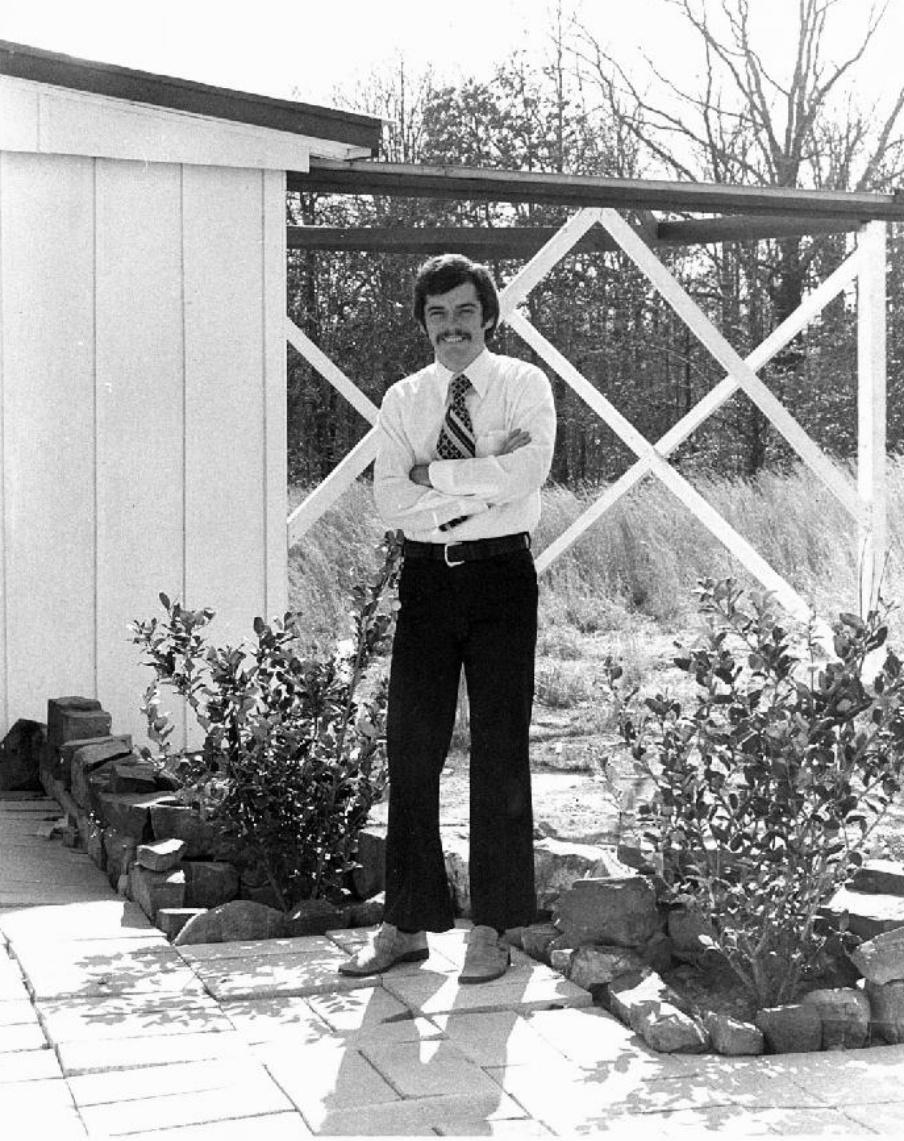
Sherrod at ASO's Edgewood Observatory - North Little Rock Airport location, 1974
---------------
Late in the evening one night in 1974 after the public fury of the fizzled fate of Comet Kohoutek had been forgotten,
----------------
Memories of Comet Honda-Mrkos-Pajdusakova (1974-f)
with thoughts of its splendid 2016-2017 return as Comet 45Pby P. Clay Sherrod
January 7, 2017
----------------------------
As Comet Honda-Mrkos-Pajdusakova (45P) streaks across our nighttime skies this winter, displaying a beautiful green coma and long linear tail several degrees to the northeast, I was inspired to go into the Arkansas Sky Observatories' Archives of bound research documents and find my records of observing this comet in 1974 and 1975. Barely visible visually in our skies prior to the remarkable Comet West (1975n) in 1975, comet 45P.
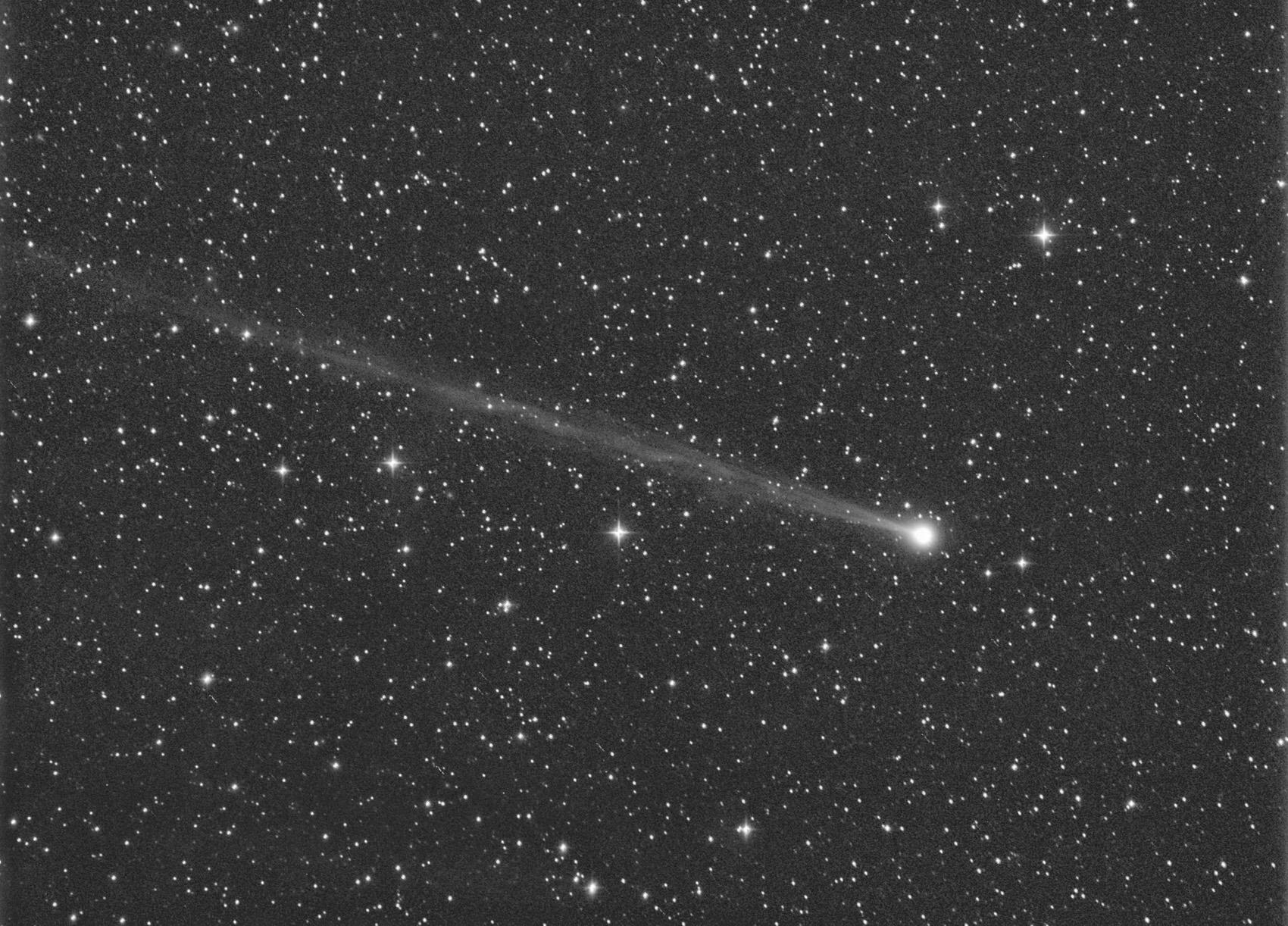
Comet 45P photographed and provided by comet photographer Michael Jager of Austria on December 22, 2016.
--------------------
Comet Honda-Mrkos-Pajdusakova was discovered long before I first observed it in 1974, and had been missed or very unfavorably placed for observation since its original discovery in 1948 by three comet hunters, M.Honda, A. Mrkos, and L. Pajdusakova, each spotting the comet independently, thus this interloper sporting the names of all three who simultaneously found this comet at magnitude 9 as a very faint "smudge" of light, quite diffuse and without a nucleus or tail. The comet in that year rapidly faded to magnitude 13 and was not seen again until 1954 when it reached magnitude 8.4 only for a very short period of time.
With its orbital period of only 5.3 years, we would think that this comet would be easily visible at each pass, but this is certainly not the case; it was not visible in 1959 because of the geometry of the Earth-Sun-Comet orientation, but it was observed very sparingly in subsequent passages. It was not until the winter of 1974-75 that the comet would become favorable for observations in evening skies; by that time there were many times more observers - both amateur and professional - who were taking a keen interest in the nature of comets.
In 1974-75, we had just seen the passage of "The Comet of the Century," Comet Kohoutek 1973-f, regretfully deemed to be the brightest comet perhaps ever seen in modern times. The world awaited this comet with eager anticipation and thousands of small telescopes were sold to an unsuspecting public hoping to catch this media-frenzied celestial visitor. When the comet was first discovered by Czech astronomer Lubos Kohoutek, it was so far away in our solar system, yet so intrinsically bright, that Dr. Brian Marsden of the Havard-Smithsonian Astrophysical Observatory properly surmised that - by the time the comet would come into the Earth' vicinity - it would be incredibly bright and thus the comet mania grew.
But soon we realized that Comet Kohoutek was going to be the fizzle of the century and many of both the general public AND the astronomical community was discouraged from the realm of comet exploration.
But the early 1970's brought an incredible influx of bright and exciting comets, most of them ignored, under-observed or missed entirely by the apathy of the Kohoutek-burned human race. I must admit, that comet 1974-f was NOT among those exciting comets. But at the time I was hooked on comet observing and Dr. Marsden had become my mentor to continue to monitor all that I could. A phone call one evening at the observatory from Marsden was all that I needed to immediately turn our modest telescopes in search of Comet Honda-Mrkos-Pajdusakova. Our first attempts to locate the comet - all done visually at that time - were unsuccessful; the now-veteran comet observer John Bortle was the first to spot it in his 12-inch Newtonian on November 15 at a faint magnitude less than 12.5; his next effort on December 4 saw the comet had brightened to a still-dim magnitude 10.4.
By December 10, 1974, using the wide field Comet Searching six-inch f/5 wide field refractor, the comet was spotted at Arkansas Sky Observatories by myself and volunteers Jim Henry and John Evans. It was nothing more in the low power field as a smudge of diffuse glow, but we had picked up the comet nonetheless and reported it as we did all comets to the SAO/International Astronomical Union's Central Bureau of Astronomical Telegrams (CBAT) as a very faint extended diffuse object only three arc-minutes across and magnitude 10.8 visually.

The IAU/CBAT Telegram that was distributed (mailed) Dec. 13, 1974
-------------
Although photography was available to us at the Edgehill facility (to later be designation Harvard MPC ObsCode H43), the practice at the time was to record physical parameters and morphology visually. Following is my report to Dr. Marsden, Mr. Dennis Milan of both Sky and Telescope magazine and the Comet Recorder for the Association of Lunar and Planetary Observers, and to Daniel Green (now the director of the CBAT) who edited The Comet out of North Carolina.
"I searched on November 28, December 2,3,4,5,8,9 and tonight (Dec. 9) photographed the exact area where the comet should be reaching stellar magnitude 13 with the 6-inch at prime focus....stars of 12th and 13th magnitude were quite obvious on 10 to 15 minute exposures.
"Tonight the comet was finally spotted with some difficulty....transparency was excellent (6th mag. stars visible to the naked eye) and seeing good. At 23.5x in the 6" the comet was at first not visible; however with 60x it was quite obvious using averted vision. No tail was visible, nor did it show any nuclear condensation [nucleus]. It appeared as a borderless diffuse glow approximately 3 arc minutes diameter.....the comet being only about 12 degrees above the trees in the distance....enclosed is a quick drawing....."
Not a work of art, but a quick sketch done 43 years ago at the telescope
---------------------------
And now - 43 years later as much has changed in the world of astronomy and otherwise - comet 1974-f is once again in my evening skies, but now as Comet 45P Honda-Mrkos-Pajdusakova.
Finally - after 70 years of always being noted as a "diffuse glow" with no central condensation, the remarkable Comet 45P as shown in photographer Michael Jager's outstanding photo at top has been an object well worth monitoring and watching for these old eyes after five decades.
Today, with modern CCD cameras, digital computerized processing of images, and precision telescopes only dreamed of in 1974, we are able to capture "faint diffuse objects" with the clarity and splendor that they truly possess. Much has changed, not only in the equipment that we use, but also in our understanding of these comets, visitors from the depths of our solar system of which we are still hanging onto uncertainties and some mysteries of their nature and origins.
And - to me - this faint diffuse object now serves as a spark of memory preserved in the old yellowing archives of research from Arkansas Sky Observatories' rich 50-year history.
-----------------------------------
---------
March 21, 2017
By
P. Clay Sherrod
Many times the passage of time - and our abilities to remember the years that pass - is marked permanently in our memories by dramatic events, typically catstrophic or with such notable 'force' as to register forever in the deep banks of our memories. Such an event was the passage of the Comet 1995 O1 Hale-Bopp in the spring of 1997, a time when I was observing it nightly from the red bluffs on the western end of Petit Jean Mountain. This comet reached a bright naked eye brightness in the evening skies and was seen by millions with its beautiful curving tail night after night. But it was not this glorious site that strikes the memories from March 26, 1997
On March 26, 2017, it will be 20 years since we heard the breaking news about the mass suicides of the separatist cult Heaven's Gate in California. Led by Marshall Applewhite, a total of at least 39 people - men women and their children either voluntarily drank poisonous punch to end their lives, or in some cases were perhaps force-fed to drink the deadly concoction. The cult had been established by Appelwhite after he had experienced a neaer-death encounter in 1971; they were told of a prophecy that said that aliens would arrive on Earth to take away disciples who believed in their coming for an exodus into the kingdom of God.
A tip to authorities on March 26, 1997, led law enforcement to the huge compound atop a ridge at Rancho Santa Fe in the hills just outside of the suburbs of San Diego California. When they arrived, the police found nothing but dead bodies....no sign of life, and no sigh of Applegate himself, nor his highest in command. There has not been any knowledge of their survival nor whereabouts since them.
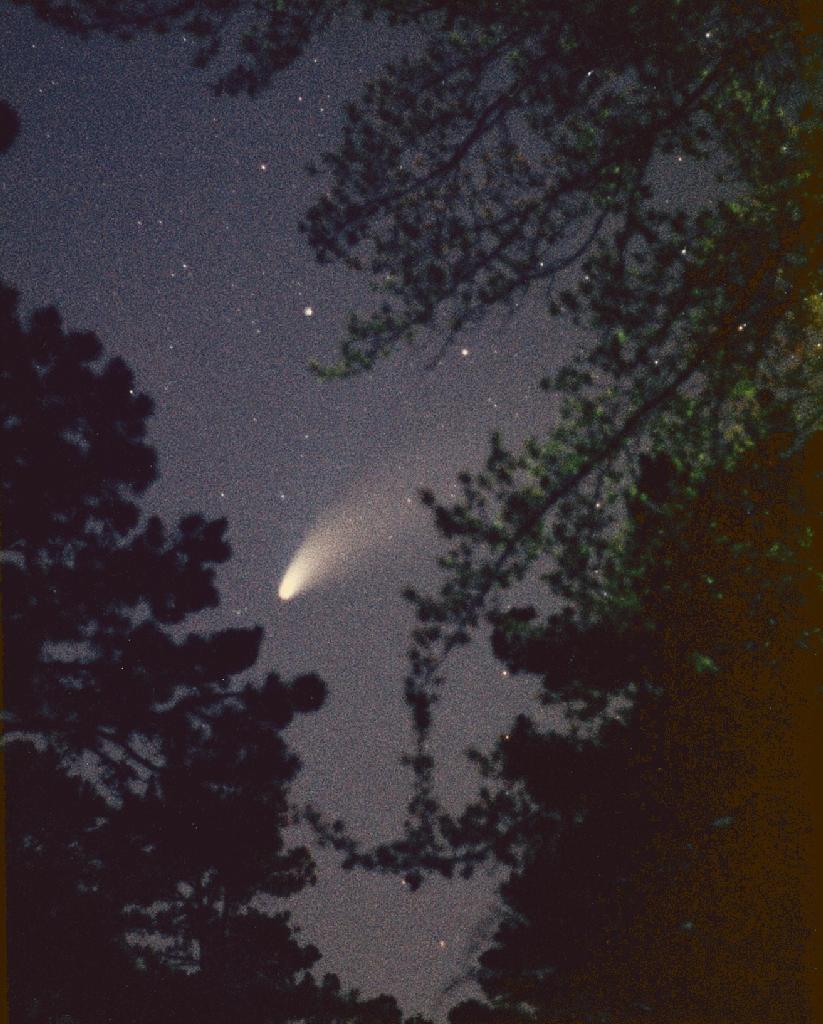
Photograph of Comet Hale-Bopp, 1995 O1 taken by P. Clay Sherrod from the west overlook at Red Bluff, Petit Jean Mountain, Arkansas
May 3, 1997 - Pentax SLT w/50mm lens 30-second exposure; comet was magnitude -0.1 in the constellation of Taurus and at a distance of about 175 million miles from Earth.
--------------------
Applewhite preached the prophecy that the Aliens would arrive cloaked or disguised cleverly out of the Heavens to select those to return with to the Kingdom. When astronomers in early 1997 learned of a small fragment that had been located photographically following this comet - nothing more than a fragment which had broken away from the parent object - Marshall Applewhite was convinced that this was the cloaked spaceship that had come to apprehend his people. Convincing that the only way to be among those selected, he convinced the group that they would drink the poisonous punch, then go to sleep and never awake.
We are only hoping that the disappearance of Applewhite and his strongmen from the Heaven's Gate compound was due to alien abduction.
Do you remember May 1997?
---------------------
March 21, 2017
The Hale-Bopp Comet and Heaven's Gate
By
P. Clay Sherrod
Many times the passage of time - and our abilities to remember the years that pass - is marked permanently in our memories by dramatic events, typically catstrophic or with such notable 'force' as to register forever in the deep banks of our memories. Such an event was the passage of the Comet 1995 O1 Hale-Bopp in the spring of 1997, a time when I was observing it nightly from the red bluffs on the western end of Petit Jean Mountain. This comet reached a bright naked eye brightness in the evening skies and was seen by millions with its beautiful curving tail night after night. But it was not this glorious site that strikes the memories from March 26, 1997
On March 26, 2017, it will be 20 years since we heard the breaking news about the mass suicides of the separatist cult Heaven's Gate in California. Led by Marshall Applewhite, a total of at least 39 people - men women and their children either voluntarily drank poisonous punch to end their lives, or in some cases were perhaps force-fed to drink the deadly concoction. The cult had been established by Appelwhite after he had experienced a neaer-death encounter in 1971; they were told of a prophecy that said that aliens would arrive on Earth to take away disciples who believed in their coming for an exodus into the kingdom of God.
A tip to authorities on March 26, 1997, led law enforcement to the huge compound atop a ridge at Rancho Santa Fe in the hills just outside of the suburbs of San Diego California. When they arrived, the police found nothing but dead bodies....no sign of life, and no sigh of Applegate himself, nor his highest in command. There has not been any knowledge of their survival nor whereabouts since them.

Photograph of Comet Hale-Bopp, 1995 O1 taken by P. Clay Sherrod from the west overlook at Red Bluff, Petit Jean Mountain, Arkansas
May 3, 1997 - Pentax SLT w/50mm lens 30-second exposure; comet was magnitude -0.1 in the constellation of Taurus and at a distance of about 175 million miles from Earth.
--------------------
Applewhite preached the prophecy that the Aliens would arrive cloaked or disguised cleverly out of the Heavens to select those to return with to the Kingdom. When astronomers in early 1997 learned of a small fragment that had been located photographically following this comet - nothing more than a fragment which had broken away from the parent object - Marshall Applewhite was convinced that this was the cloaked spaceship that had come to apprehend his people. Convincing that the only way to be among those selected, he convinced the group that they would drink the poisonous punch, then go to sleep and never awake.
We are only hoping that the disappearance of Applewhite and his strongmen from the Heaven's Gate compound was due to alien abduction.
Do you remember May 1997?
---------------------
----------
Arkansas Sky Observatories Sets Record for 2016
By
P. Clay Sherrod
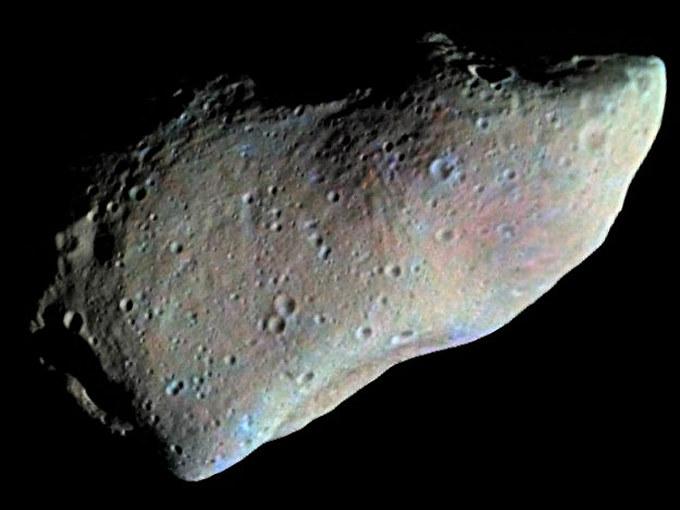
The dangerous Earth-crossing asteroid/NEO Apophis which is predicted
to have a very close encounter with the Earth in April, 2029
------------------
Arkansas Sky Observatories (ASO), atop Petit Jean Mountain, has reached a milestone in observations by all private observatories world-wide. The primary studies at the observatories – all in cooperation with NASA, Harvard/Smithsonian Observatories and the Tokyo Observatory – has always been Near Earth Objects (NEOs), asteroids and comets which intercept the Earth’s orbit at some time in the future and pose hazards of destruction on Earth.
The study of NEOs has come to the forefront for NASA and various branches of many governments and nearly all facilities devoted to the refinement of the orbits of these bodies – some 45,000 of them – are funded through grants and foundations.
Not so with ASO, which is one of the nation’s oldest privately funded research observatories, operated and owned by P. Clay Sherrod who established the protocol for the research in 1970 when the observatory was only one of four “confirmation stations” of the Central Bureau of Astronomical Telegrams at Smithsonian-Harvard.
On December 31, 2016, Sherrod topped 12,111 measurements (for 2016 only) of the motions of asteroids and comets submitted and accepted as accurate to the Harvard Minor Planet Center and Tokyo Observatory. This is the largest submission ever for a private, non-funded observatory in a single year.
Since computer digitization in 2001, ASO has amassed nearly 94,000 measurements, now being able to log over 100 objects nightly through total robotic operation of three observatories in Arkansas. The goal is to surpass 100,000 orbital measurements by year-end 2017.
* * * * *
-----
The Constellations - Sky Tours for Computerized telescopes
A Two-Volume Sky GuideTwo new astronomy books by P. Clay Sherrod, director of Petit Jean Mountain's Arkansas Sky Observatories (ASO), have just been completed and released.
This two-volume set of extensive guides is entitled
The Constellations: Sky Tours for Computerized Telescopes
and contains over one thousand pages of information about most of the major constellations in our night skies.
Sherrod started this very detail-oriented project in 2001 and it is just now coming into fruition. It contains not only writings about the history, mythology, and science of the major constellations, but also hundreds of original photographs from the Observatories as well as original artwork and graphics by Sherrod.
The books are intended to guide casual as well as advanced star gazers through the night sky and provide rich detail about the physics of objects throughout the constellations; the ancient lore and legend behind constellation names, Greek mythology, star names and the development of astronomy through history is prevalent through each constellation presented. All enthusiasts - casual novice to advanced amateur - will benefit and enjoy the extensive references in this series.
In 38 chapters throughout the two book set, Sherrod provides sky charts of the constellations and explanations about the interesting objects - from bright stars to black holes and X-ray bursters - in each chapter.
Details on these two books, in addition to others recently published can be found at: http://www.lulu.com/spotlight/Stardoc44
A noted lecturer, writer and researcher in science and astronomy, this is Sherrod's 19th book, six of which were completed and published in 2016; it is his first book in astronomy since 2005. Copies of the books can be obtained through Barnes and Noble and Amazon, but are also available direct from Arkansas Sky Observatories. Write to This email address is being protected from spambots. You need JavaScript enabled to view it. for more information about both the new books and the operations of ASO.
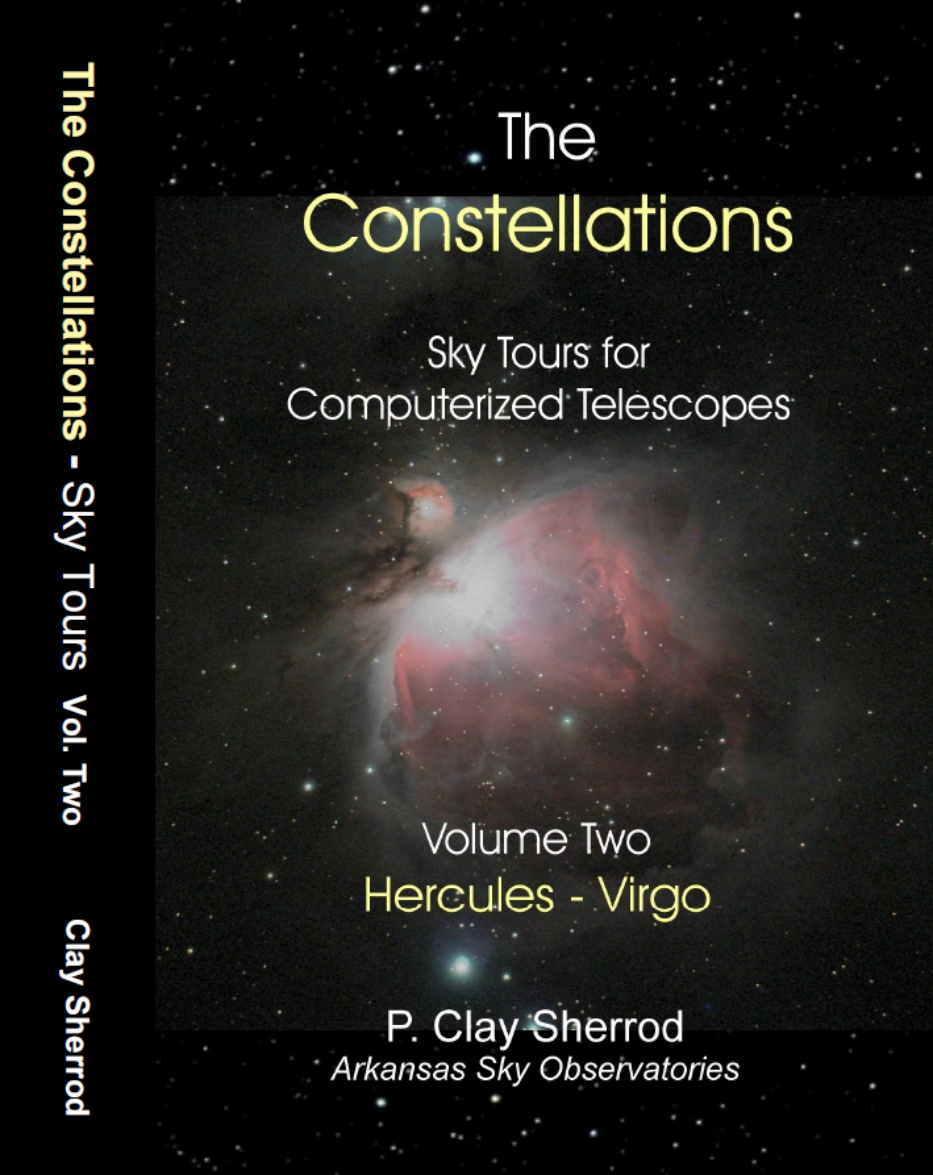
* * *
-------
December 2016
P. Clay Sherrod

IIlustration by P. Clay Sherrod, 1991
--------------------------
It is almost Christmas here on planet Earth, a time when we celebrate the most unusual of happenings and perhaps a time unique in all of the world of biology so far as we know. We reflect on an instance, well over two thousand years passed, on which we rely from short statements in two books of a magnificent record of history that we have come to know as our Bible of the Christian world. In that book is preserved words that form mental images of times of unrest, persecution, and unfathomable hardships of our ancestors as they struggled simply to survive from poverty, hunger and tyranny. In many ways, we might interject here that the ancient world was
December 2016
Christmas: A Quiet Peace in a Chaotic World
byP. Clay Sherrod

IIlustration by P. Clay Sherrod, 1991
--------------------------
It is almost Christmas here on planet Earth, a time when we celebrate the most unusual of happenings and perhaps a time unique in all of the world of biology so far as we know. We reflect on an instance, well over two thousand years passed, on which we rely from short statements in two books of a magnificent record of history that we have come to know as our Bible of the Christian world. In that book is preserved words that form mental images of times of unrest, persecution, and unfathomable hardships of our ancestors as they struggled simply to survive from poverty, hunger and tyranny. In many ways, we might interject here that the ancient world was
